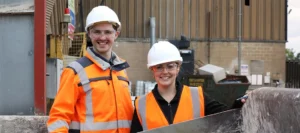Is the government just blowing hot air into the Future Homes Standard?
Mike Harrison, engineering sector specialist at R&D tax credit consultancy ForrestBrown writes for Environment Journal on why he thinks the government’s Future Homes Standard falls short in its environmental aims and won’t make a significant impact on Britain’s carbon emissions.
Buying a new home is never a simple affair, so I decided to take things one step further by designing and building my own eco-home – a home that was as sustainable and environmentally friendly as possible.
As an engineer with a construction industry background, I had a head start – but the process was still an eye-opener. Beyond the construction phase, by far the biggest challenge was stitching all the elements of an eco-home together in a coherent way.
It wasn’t about the individual technical components of my build; I needed to view a home as a complete ‘machine’ in its own right to make it function properly.
This realisation is why I’ve reservations about the Government’s recent pledge that by 2025, all new homes will be banned from installing gas boilers and will instead be heated by low-carbon alternatives. It’s admirable – but fundamentally misunderstands how eco-friendly buildings are constructed.
The proposed Future Homes Standard envisages a 31% reduction in CO2 emissions from new homes through improved insulation and more energy-efficient heating. Heat pumps play a key role in this given that the energy efficiency of air and ground source heat pumps can be over 300%.
Undoubtedly, the UK needs to embrace eco-friendly building and engineering practices in order to hit net zero emission by 2025 and meet the country’s demand for new housing. Indeed, we’ve lagged behind the standards set by other countries for far too long.
Take Passivhaus, Germany’s ‘gold standard’ of eco-friendly housing. These are so effectively insulated that they don’t require heating. Energy is only needed for core functions like lighting and appliances. It’s a glimpse of where we could go in future.
Construction, government and society at large need to look at the building as a system. Even a one-bedroom dwelling is a rather complicated system. As seasons change, the system has to adapt and react to these changes.
But I’m concerned about how eco-homes (and eco-friendly construction more generally) are being thought about and discussed. Like an electric car, an eco-home might look the same but it will be fundamentally different under the bonnet.
Heat pumps don’t go far enough when future-proofing buildings. A big stumbling block in building eco-homes is that government regulations aren’t joined up enough or complied with to absorb new technologies.
Building my own eco-home showed to me that the way new homes are being constructed is broken from the bottom up. The result is buildings that are not as coordinated or integrated as they should be.
For example, the Renewable Heat Incentive (RHI) is well-meaning but adopts an unsuitable baseline meaning it fails to reward the most efficient designs, and crucially doesn’t address the system complex interdependency (and associated system uncertainties from an R&D perspective) of a complete modern house as it only focuses on individual aspects.
The focus shouldn’t just be on the heat pump or, say, triple glazing – they’re individual parts of a holistic project. We need to look at the entire build and fabric of an eco-home.
This opens up a whole host of potential R&D opportunities for companies working across the supply chain – whether in the renewable sector, architects, fabricators, manufacturers, housebuilders and contractors.
For eco-housing to take off and results to be consistent and readily replicated, it all needs to become modular, integrated and far simpler. But simplifying things is often complicated.
It’s more than brute force regulation. If planners had a proper grasp of the issues and had a more consistent approach with clear definitions for elements of design, this would certainly help.
If construction firms are taking design risks, we need to ask why. If people are finding loopholes, why? Are the materials too expensive? Are the methods too laborious? Is the technology not well enough known?
These questions are of vital importance with a climate crisis looming.
The house is more than the sum of its parts. If we aren’t even getting the foundations right –properly insulating floors to stop heat escaping downwards, for example – the government’s pledge around heat pumps will be moot. And what does that say about the home on top of it?
But there’s great potential. One of our clients has made a robotic brick building system. This has huge potential to get consistency of build and extremely efficient house building whilst helping to overcome certain labour skills shortages within the industry.
Now, more than ever is the time for companies to drive innovation to deliver integrated systems within the home to ensure all the cogs in the machine mesh together. The future is exciting – we just need to seize it.
Photo Credit – Pixabay















